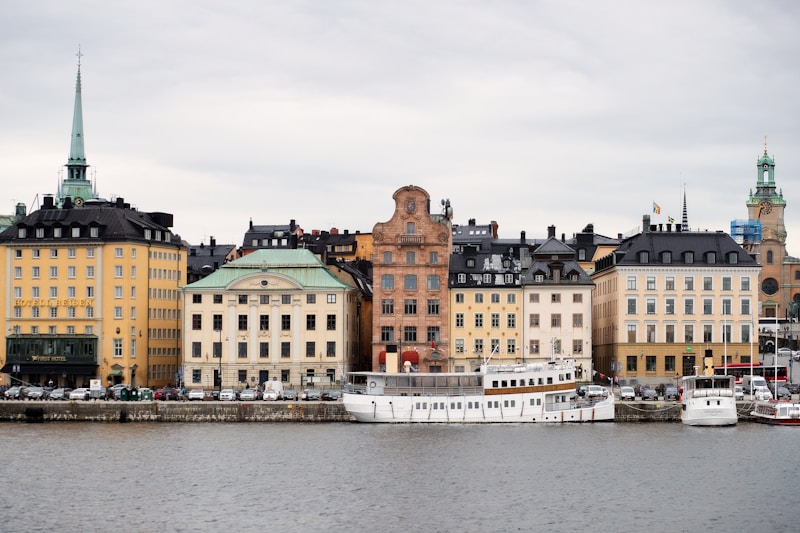9 Questions
What is NATO's main mission?
Which country is not a member of NATO's Nuclear Planning Group?
What was the purpose of NATO's involvement in the Libyan Civil War?
Which country is the most recent member to join NATO?
What is the purpose of NATO's Enhanced Forward Presence?
What is Article 5 of the North Atlantic Treaty?
What is the purpose of the Defense Investment Pledge?
What was the purpose of NATO's involvement in Bosnia from 1992 to 1995?
Which of the following countries is recognized by NATO as an aspiring member?
Summary
NATO is an intergovernmental military alliance between 31 member states, established in the aftermath of World War II to defend each other against attacks by third parties. The organization has been involved in military operations in the Balkans, the Middle East, South Asia, and Africa, and its combined military spending as of 2022 constituted around 55 percent of the global nominal total. NATO has targeted its NATO Response Force deployments in Eastern Europe, and its combined militaries include around 3.5 million soldiers and personnel. NATO formed with twelve founding members and has added new members nine times, most recently when Finland joined the alliance on 4 April 2023. NATO's main headquarters are located in Brussels, Belgium, while NATO's military headquarters are near Mons, Belgium.
The Treaty of Dunkirk was signed by France and the United Kingdom on 4 March 1947, during the aftermath of World War II and the start of the Cold War. Talks for a wider military alliance, which could include North America, began in the United States in March 1948, resulting in the signature of the North Atlantic Treaty on 4 April 1949. NATO has conducted several military interventions, including in Bosnia from 1992 to 1995 and later Yugoslavia in 1999. NATO's military structure was cut back and reorganized in the 1990s, with new forces such as the Headquarters Allied Command Europe Rapid Reaction Corps established.
Article 5 of the North Atlantic treaty, requiring member states to come to the aid of any member state subject to an armed attack, was invoked for the first and only time after the September 11 attacks, after which troops were deployed to Afghanistan under the NATO-led ISAF. The alliance showed unity and agreed to take command of the ISAF, which included troops from 42 countries. NATO has also been involved in counter-piracy operations and enforcing a no-fly zone over Libya in accordance with UN Security Council Resolution 1973.
Russia's annexation of Crimea led to strong condemnation by all NATO members, and NATO countries agreed on the creation of NATO Enhanced Forward Presence, which deployed four multinational battalion-sized battlegroups in Estonia, Latvia, Lithuania, and Poland. NATO had deployed 40,000 troops along its 2,500-kilometre-long Eastern flank to deter Russian aggression as of June 2022.
The combined militaries of all NATO members include around 3.5 million soldiers and personnel, and their combined military spending as of 2022 constituted around 55 percent of the global nominal total. NATO has targeted its NATO Response Force deployments in Eastern Europe. NATO's main headquarters are located in Brussels, Belgium, while NATO's military headquarters are near Mons, Belgium.
NATO has added new members nine times, most recently when Finland joined the alliance on 4 April 2023. Following the acceptance of its application for membership in June 2022, Sweden is anticipated to become the 32nd member, with its Accession Protocol to the North Atlantic Treaty now in the process of being ratified by the existing members. NATO currently recognizes Bosnia and Herzegovina, Georgia, and Ukraine as aspiring members.
NATO has been involved in both political and humanitarian situations, with diplomatic forums for regional cooperation between NATO and its neighbors set up during the post-Cold War period. NATO has also been involved in providing humanitarian aid to refugees from Kosovo and establishing the KFOR peacekeeping forceNATO: Summary of Mission, Special Arrangements, Enlargement, and Defense Expenditure Budget
Mission:
- ISAF was initially charged with securing Kabul and surrounding areas from the Taliban, al Qaeda, and factional warlords.
- NATO endorsed a plan to end the Afghanistan war and to remove the NATO-led ISAF Forces by the end of December 2014.
- NATO deployed warships in an operation to protect maritime traffic in the Gulf of Aden and the Indian Ocean from Somali pirates.
- During the Libyan Civil War, NATO enforced a no-fly zone over Libya and took control of the arms embargo.
- Use of Article 5 has been threatened multiple times and four out of seven official Article 4 consultations have been called due to spillover in Turkey from the Syrian civil war.
Special Arrangements:
- Denmark, Iceland, and Norway chose to limit their participation in three areas: no permanent peacetime bases, no nuclear warheads, and no Allied military activity (unless invited) permitted on their territory.
- France pursued a military strategy of independence from NATO under a policy dubbed "Gaullo-Mitterrandism".
- France remains the only NATO member outside the Nuclear Planning Group and will not commit its nuclear-armed submarines to the alliance.
Enlargement:
- NATO has thirty-one members, all in Europe and North America.
- Membership has grown to 31 through several enlargements, which requires unanimous approval by all current members.
- Four new members joined during the Cold War: Greece, Turkey, West Germany, and Spain.
- Following the dissolution of the Soviet Union, many former Warsaw Pact and post-Soviet states sought membership in NATO.
- NATO issued new guidelines for membership with individualized "Membership Action Plans".
- Finland is the most recent country to become a NATO member state; it did so on 4 April 2023.
Defense Expenditure Budget:
- Few members spend more than two percent of their gross domestic product on defence, with the United States accounting for three quarters of NATO defence spending.
- NATO members met at the 2014 Wales Summit to establish the Defense Investment Pledge, which requires members to contribute at least 2% of their Gross Domestic Product (GDP) to defense and 20% of their defense budget to major equipment which includes allocations to defense research.Overview of NATO and its partnerships with third countries
Description
Test your knowledge of one of the world's most powerful military alliances with our NATO Quiz! Explore the history of the organization, its missions, special arrangements, enlargement, and defense expenditure budget. Discover the countries that are part of NATO and those aspiring to join. From its involvement in humanitarian situations to its military interventions, this quiz will challenge your understanding of NATO's role in global affairs. See how much you know about one of the key players in international relations today!


